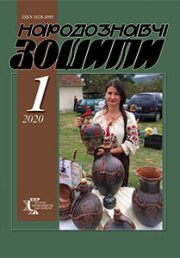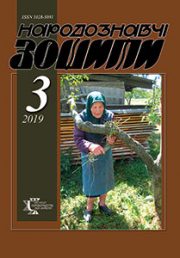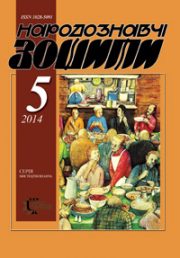The Ethnology Notebooks. 2022. № 4 (166), 910—917
UDK 271.2-523.47(477. 83-22)”15″
DOI https://doi.org/10.15407//nz2022.04.910
HELYTOVYCH Maria
- ORCID ID: https://orcid.org/0000-0001-5839-9585
- Candidate of Arts, Associate Professor,
- Andrey Sheptytskyi National Museum in Lviv,
- Head of the department of ancient Ukrainian art,
- 20, Svobody avenue, 79000, Lviv, Ukraine,
- Contacts: e-mail: helytovychm@yahoo.com
Abstract. The article analyzes a complex of icons of the beginning of the XVII century from the church of St. Paraskeva in the village Malniv (Lviv region). Sights were included in the collections of the Andrey Sheptytskyi National Museum in Lviv and the National Art Museum of Ukraine at different times and in different ways.
They were not considered as one integral row of the iconostasis ensemble until now. For the first time, the history of their acquisition is traced and bibliographic information is provided. These icons are chosen as an eloquent illustration of the main trends in the artistic expression of Ukrainian icons at the turn of the 16th — 17th centuries. Works also serve as an example of changes in iconography in which ancient traditions and new trends coexist. The artistic features of each work are considered in detail, the closest analogies with monuments created at the same time and in the same style are mentioned. The connection of these icons with the painting branch that operated in the city of Sudova Vyshnya in the Lviv region and was one of the most active in Western Ukrainian territories in the 17th century is discussed. Works of Vyshnya masters can also be found in Transcarpathia and Lemko regions. It is proposed to consider icons from Malniv as one of the first complexes of monuments from which it is possible to keep track of the activities of Vyshnia painters. Clarification of their donation (1610—1620 y.) expand the established chronological limits of creativity of this center (1640—1680), which were based on dated works.
Systematization and research of similar complexes of monuments from separate churches and localities lay the foundations for further studies of the Vyshnya painting center that played a prominent role in Western Ukrainian painting of the XVII century.
Keywords: icon, master, painting center, tradition, Malniv.
Received 11.08.2022
REFERENCES
- Svientsitskyi, I. (1928). Icon painting of Galician Ukraine of the XV—XVI ages. Zhovkva: Printing house of fathers Basilians. (Series «Collections of the National Museum in Lviv») [in Ukrainian].
- Skop, L. (2004). Painter of the icon of the Virgin Hodegitria from Mrazhnytsia. Lviv: Logos [in Ukrainian].
- Dragan, M. (1970). Ukrainian decorative carving of the 16th—18th centuries. Kyiv: Naukova dumka [in Ukrainian].
- Slobodian, V. (1998). Churches of Ukraine. Peremyshl diocese. Lviv [in Ukrainian].
- Chlenova, L. (Ed.). (1999). Masterpieces of Ukrainian icon painting of the 12th—19th centuries: album. Kyiv: Art [in Ukrainian].
- Milyaeva, L., & Helytovych, M. (2007). Ukrainian icon of the 11th—18th centuries. Kyiv: Spiritual Heritage of Ukraine [in Ukrainian].
- Helytovych, M. (2010). Fragments from the artistic heritage of painters from Sudova Vyshnia. Bulletin of the Lviv branch of the National Scientifically-Research restoration center of Ukraine, 1 (11), 34—39 [in Ukrainian].
- Helytovych, M. (2014). Ukrainian icons of the 13th and early 16th centuries from the collection of the National Museum in Lviv named after Andrey Sheptytskyi: album-catalog. Lviv: National Museum in Lviv named after Andrey Sheptytskyi; Kyiv: Master of Books [in Ukrainian].
- Khodak, I. (2011). Icon «Protection of the Virgin» from the collection of the National Art Museum of Ukraine: the problem of origin. Art history Studies: Fine, decorative and applied arts. Architecture, 4 (36), 43—68 [in Ukrainian].
- Svientsitska, V.I., & Sydor, O.F. (1990). Legacy of the ages. Ukrainian painting of the 14th—18th centuries in Lviv museum collections. Lviv: Kamenyar [in Ukrainian].
- (2008). Dr. Dmytrukh, Sevastiyan. Ukrainian sacred art from the collection «Studion». In the collection of the National Museum in Lviv named after Andrey Sheptytskyi (Part II).Lviv: Sribne slovo [in Ukrainian].
- Kinga Yara, R. (2016). Icons from the collection of the Muzeum of Folk Building in Sanok. Sanok [in Polish].







